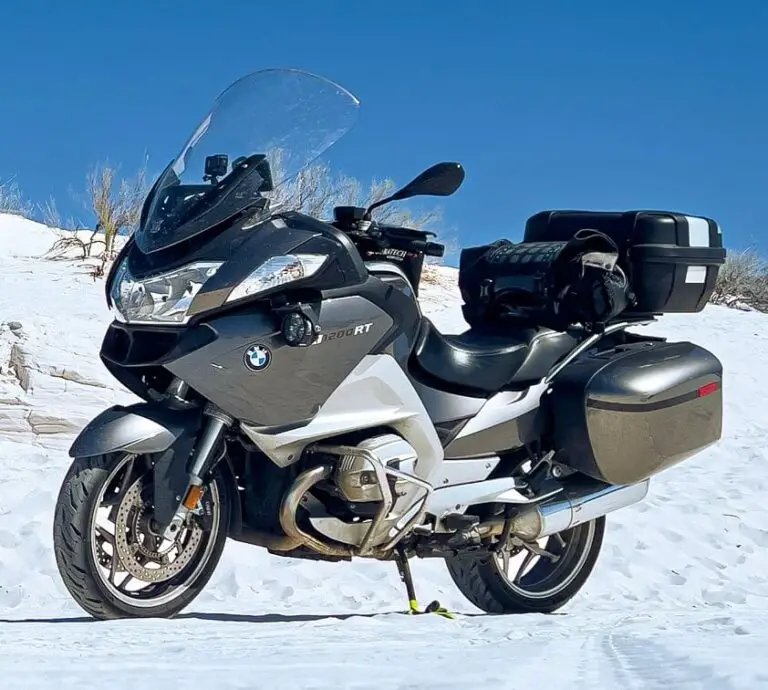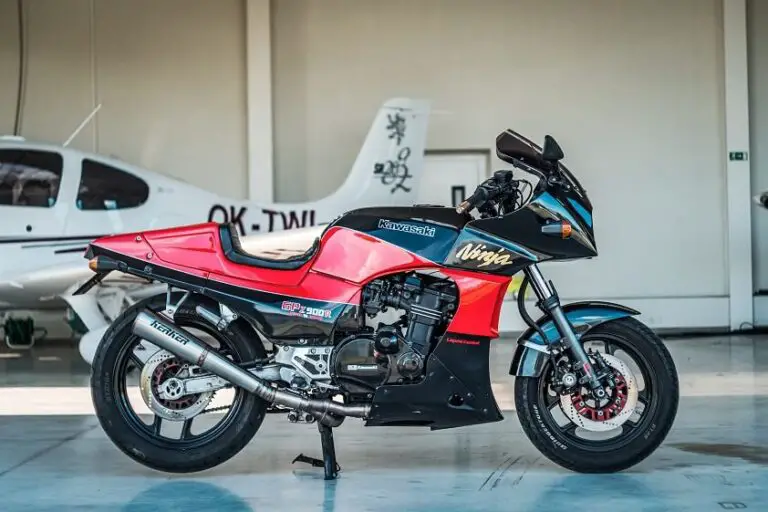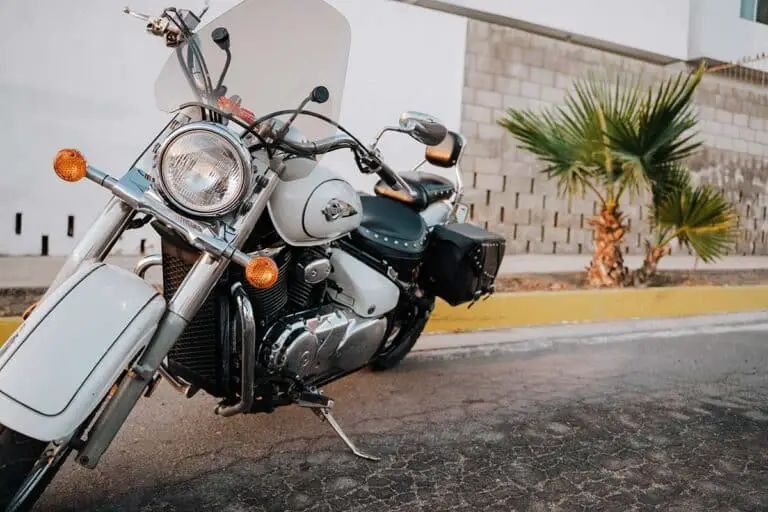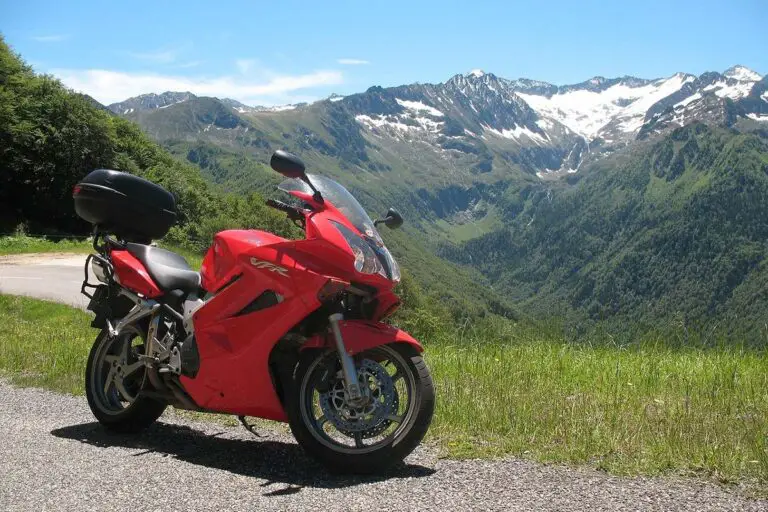Honda CB250 Specs & Review
Disclosure: We may get commissions for purchases made through links in this post.
The late ’60s to mid ’80s was a fun and exciting period in motorcycling history and the life of the Honda CB250. It was when Honda seemed to have lost all marketing sense and went against the tide.
Instead of battling it out with furiously fast, 2-stroke twins, the Honda CB250 advertently appealed to the more rational rider who wanted a two-wheeler that was “more sedate and reliable.”
Introduced in 1968, the Honda CB250 is an entry-level motorbike preceding the same-class CB72. It featured a parallel-twin engine, dual Keihin carbs, a 100-mph top speed rating, sophisticated simplicity, and everyday practicality that bested its Western and Japanese counterparts.
The Honda CB250’s latest installment for 2022 is undeniably a far cry from what the bike was 55 years ago. No longer laid-back by any means, the commuter/cruiser bike now sports a naked, more aggressive look only made better by an Assist & Slipper clutch, Showa SFF-BP USD forks, and an LCD dash replete with all the essential gauges and indicators.
This attractive package would have never existed had it not been for the original Honda CB250, which we will learn more about in this article.
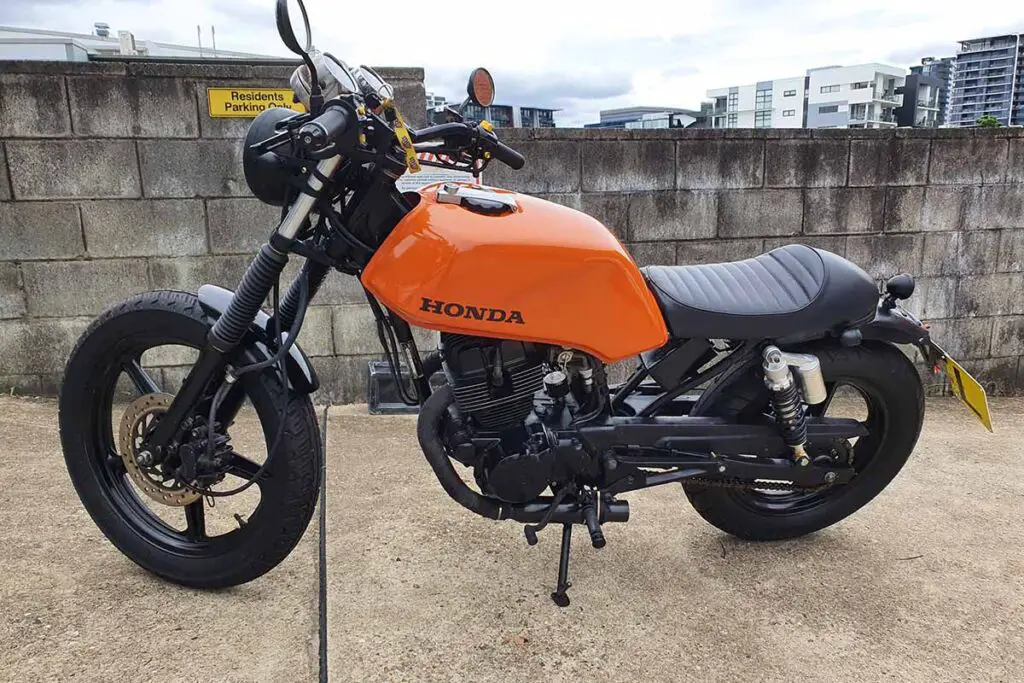
About the Honda CB250
The Honda CB250 is one of 82 models launched under the Honda CB series. It is eighth to the smallest in displacement and is popular among motorheads and Honda enthusiasts for daily commuting and vintage motorcycle racing.
First unveiled in Europe at the Earls Court Show of 1967, the re-styled two-wheeler featured aesthetics largely influenced by western tradition.
Unlike the CB72, the Honda CB250 initially received a lukewarm response from the riding community. Nonetheless, it did not stop the quarter-liter bike from exceeding the sales of its more-powerful predecessor by a huge margin.
The reason behind its success is the motorbike’s appeal to riders who are less after a niche bike and more about having a modest daily driver and workhorse two-wheeler – a rider group that comprised a larger portion of Honda’s market.
1968-2008 Honda CB250 Cafe Racer Specs & Features
Engine
The Honda CB250 has an air-cooled, 4-stroke parallel-twin OHC engine. The compression ratio plays around 9.5:1 and 9.2:1, while dual 30-mm constant-velocity Keihin carburetors handle the air-fuel mixture.
The bore-stroke ratio was initially set to 56 x 50.6 mm (2.205 x 1.992 inches) but later changed to 53 x 53 mm (2.087 x 2.087 inches), providing a perfect balance between speed and pulling ability.
Similarly, piston displacement started at 249 cm³ (15.2 in³) but was eventually reduced to 234 cm³ (14.3 in³) due to adjustments to the bore and stroke.
Overall, this engine configuration yields the following performance figures:
| Description | |
|---|---|
| Top Speed* | 95–100 mph (152.8–160.9 km/h) |
| Horsepower | 30 hp (21.9 kW) @ 10,500 RPM |
| Maximum Torque | 21 Nm (2.1 kgf-m, 15.5 ft-lbf) @ 9,500 RPM |
| Fuel Economy | 106 mpg (2.21 L/100 km) @ 31 mph (50 km/h) 63 mpg (3.73 L/100 km) @ 70 mph (50 km/h) on 1-up** 45 mpg (5.23 L/100 km) @ 70 mph (50 km/h) on 2-up** |
| Approximate Tank Range | approximately 144–339 miles for a full fuel tank, depending on solo/pillion riding and speed |
* Data courtesy of 8-Bike 250cc Giant Test
Fuel & Lubrication
Fuel tank capacity for pre-1982 models is 12 L (3.2 USgal) of unleaded gasoline with a minimum rating of RON 95. For Nighthawk trims, this increased to 16 L (4.2 USgal including 3.2 L/0.85 USgal reserve) of PON 86+ fuel.
Across all models, the use of lower-Octane fuel is ill-advised as it can cause persistent spark knock and consequent engine failure.
Lube-wise, the CB250 has a Forged and wet sump lubrication system that requires SAE 10W-40 Pro Honda GN4/HP4 motor oil or its equivalent in the following capacities:
| CB250 K Series | CB250 Nighthawk Series | |
|---|---|---|
| After disassembly | 2 L (2.1 US qts.) | 1.8 L (1.9 US qts.) |
| After draining | N/A | 1.5 L (1.6 US qts.) |
Use of other multigrade oils specified in the owner’s manual is permissible following changes in ambient temperatures and riding conditions. However, engine oil variants outside OEM recommendations should have a minimum API grade of SJ and meet JASO T903 MA/MB standards.
Drivetrain
The Honda CB250 roars to life via a 5-speed forward constant-mesh integral gearbox. Meanwhile, a wet multi-plate clutch assembly (with a gearshift sequence of 1-N-2-3-4-5) delivers power to the wheels.
An exposed DID520VC5 or RK520MOZ9 chain controls the wheelspin. Should the stock chain become worn or damaged, you can replace it with an RK Racing Chain GB520MXU-120 (520 Series), Gold (view on Amazon).
For your reference, below are the stock gear ratios of Honda CB250 K0–K4 versus Nighthawk models:
| CB250 K Series | CB250 Nighthawk Series | |
|---|---|---|
| Primary Reduction Ratio | 3.714 | 3.631 |
| Transmission Gear Ratio – 1st | 2.353 | 2.846 |
| Transmission Gear Ratio – 2nd | 1.636 | 1.777 |
| Transmission Gear Ratio – 3rd | 1.269 | 1.333 |
| Transmission Gear Ratio – 4th | 1.036 | 1.083 |
| Transmission Gear Ratio – 5th | 0.900 | 0.913 |
| Final Reduction Ratio* | 2.375 | 2.357 |
Ignition
The CB250 Honda has a digital CDI (Capacitor Discharge Ignition) system and a bobine electric starting system with an auxiliary kick-starter. A Coiligni alternator serves as the two-wheeler’s charging system, while a 12V 12Ah/(10 HR) battery powers lighting and electronics.
An NGK B-8ES (earlier models) or NGK CR6HSA or Nippon Denso U20FSR-U (Nighthawk trims) spark plug with an electrode gap of (0.6–0.7 mm, 0.024–0.028 inch) is responsible for spark ignition.
Per the Yuasa Powersports Battery Catalogue, the recommended battery for the CB250 is either a YTZ8V (view on Amazon) or YTX7L-BS format with the following assembled dimensions.
Note that these battery formats are only verified for 1991 to 2009 Nighthawk trims and may not necessarily be compatible with earlier model years.
| Format | Dimensions |
|---|---|
| 12V 7Ah/(10 HR) YTZ8V | 113 x 70 x 130 mm (4.44 x 2.75 x 5.12 inches) |
| 12V 6Ah/(10 HR) YTX7L-BS | 114 x 71 x 131 mm (4.50 x 2.81 x 5.19 inches) |
The same goes for fuse and lighting assembly details in these tables:
| Fuse | Wattage |
|---|---|
| Main, Spare | 20 A |
| Others, Spare | 10 A |
| Lighting | Wattage |
|---|---|
| Headlight | 12V 60/55 W |
| Brake/Tail Light | 12V 3/32 CP |
| Turn Signals (F/R) | 12V 32 CP (each) |
| Instrumentation, Neutral, Turn Signal, High-Beam, Side Stand Indicators | 12V 3.4 W |
Tires & Brakes
Cast-aluminum wheel hubs have tubeless tires measuring 3.00-18 (4PR) at the front and 3.25-18 (4PR) at the back. These stock knobbies have a recommended cold-tire pressure ranging from 176.5–200 kPa (1.8–2.0 kgf/cm2, 25.6–28 psi), depending on driving speed and payload.
As for brakes, front-and-rear internal expanding drums measuring 52.2 cm2 x 2 provide the Honda CB250 its stopping power.
On the other hand, Nighthawk trims use 90/100 18M/C 54S Dunlop K300MA and 120/90 16M/C 63S Dunlop K327AG, front and rear.
Recommended cold-tire pressure is fixed at 200 kPa (2.0 kgf/cm2, 28 psi) for these Dunlop radials unless there are changes to riding conditions or weather. For more aggressive driving, they can be swapped out for same-size Dunlop Geomax MX33 Dirt Bike Tires (view on Amazon).
Suspension
Enclosed in a semi-double-cradle steel frame (63° caster angle, 85 mm/3.3 inches trail for earlier models; 28°46′ caster angle, 108 mm/4.3 inches trail for later iterations) are front telescopic forks and a rear swingarm with adjustable pre-load.
These suspension units are augmented by a 1,320-mm (52-inch) wheelbase, a 150-mm (5.9-inch)minimum ground clearance, and a 4.2-m (13.8-foot) turning circle. For Nighthawk models, the wheelbase and road clearance increased by 100 mm and 10 mm, respectively.
Dimensions
Overall dimensions for earlier models of the Honda CB250 are 2,090 x 775 x 1,075 mm (82.3 x 30.5 x 42.3 inches – L x W x H). Meanwhile, Super Dream iterations released from 1978 to 1986 are slightly longer and narrower.
The difference between these measurements and that of later-year Nighthawk trims – 2,092 x 741 x 1,087 mm (82.4 x 29.2 x 42.8 inches – L x W x H) – are close to negligible. Across all models, saddle height is estimated at 755 mm (29.7 inches).
Capacity-wise, the bike’s weight distribution is 96 Kg (211.7 lbs.) at the front and 126 Kg (273.1 lbs.) at the back. Dry weight is 131 Kg (289 lbs.) for California releases and 130 Kg (287 lbs.) for all other models.
Curb weight was initially 160 Kg (352.8 lbs.) but later trimmed down by a few pounds. Of all the iterations, the CB250T Dream (1977-1978) is the heaviest of the lot, with a curb weight of 185 Kg (407.9 lbs., including fluids).
Exterior
Most Honda CB250 trims sported a Western or European styling, with double-chrome exhausts and dampers as one of its standout features. For instance, the Dream (CB250T) and Super Dream (CB250N) series reportedly resembled their bigger namesakes – the CB750F and CB900F.
Compared to the famed CB72, the 250-class Honda had a broader, more rounded fuel tank. It was also longer and positioned lower, making for a less-cramped riding position.
On the downside, most owners and test riders do not fancy the width of the handlebars (view on Amazon), which makes for laborious riding in moderate breezes. The dilemma may not apply to all production models but is true for the Honda CB250 G5.
Worth of a CB250 Honda
Like all other pre-1970 motorcycles, sources for Honda CB250 MSRPs are a bit obscure. Hence, I am only able to consolidate retail pricing for the Nighthawk trim, as can be seen below (source: JD Power)
| Year – Model – Trim | List Price | Retail/Trade-In Values |
|---|---|---|
| 1991 Honda CB250M/LM Nighthawk | $2,198 | $270 – $1,810 |
| 1992 Honda CB250N Nighthawk | $2,299 | $315 – $1,920 |
| 1993 Honda CB250 Nighthawk | $2,499 | $315 – $2,000 |
| 1994 Honda CB250 Nighthawk | $2,899 | $340 – $2,205 |
| 1995 Honda CB250 Nighthawk | $3,099 | $340 – $2,285 |
| 1996 Honda CB250T Nighthawk | $3,299 | $480 – $2,425 |
| 1997 Honda CB250V Nighthawk | $3,399 | $555 – $2,415 |
| 1999 Honda CB250X Nighthawk | $3,399 | $570 – $2,420 |
| 2000 Honda CB250Y Nighthawk | $3,399 | $1,125 – $4,260 |
| 2001 Honda CB2501 Nighthawk | $3,399 | $1,220 – $4,425 |
| 2002 Honda CB2502 Nighthawk | $3,399 | $1,350 – $4,585 |
| 2003 Honda CB2503 Nighthawk | $3,399 | $720 – $945 |
| 2004 Honda CB2504 Nighthawk | $3,399 | $795 – $1,045 |
| 2005 Honda CB2505 Nighthawk | $3,499 | $810 – $1,065 |
| 2006 Honda CB2506 Nighthawk | $3,599 | $840 – $1,105 |
| 2007 Honda CB2507 Nighthawk | $3,599 | $910 – $1,195 |
| 2008 Honda CB2508 Nighthawk | $3,699 | $1,140 – $1,500 |
Honda Nighthawk CB250 Pricing (1991 – 2008)
Of the details I have gathered from this particular newspaper clip dating back to 1974, the CB250 G5 was sold for £540 in the UK (approximately £5,300+ if sold brand-new today).
Using this value as a reference, the same trim was likely sold in North America for around $1,000. Interestingly, these figures are almost $200 more than the list price of the larger-displacement Honda CB450.
While these resale values may be considered somewhat hefty, they did not stop sales of the CB250 from surpassing that of the revered CB72. This is notwithstanding the presence of Ducati CZ 471, Ducati MK III, Harley-Davidson SS-250, and Kawasaki S1 – competitor entries that dominated the motorcycling landscape within the same period.
About Honda
Honda Motor Company Ltd. is a global leader in robotics, energy solutions, AI, mobility, and automotive. Founded in 1946 by Soichiro Honda, the company began as a concept formed inside the Art Shokai garage in Hongo, Tokyo.
From its humble beginnings as a mass-producer of piston rings, motorized bicycles, and surplus engines, Honda gradually evolved into a well-respected powerhouse. The industry’s cornerstone has been recognized for its contributions and extensive product offerings, including the Honda CB250 series.
Conclusion – Honda CB250 Cafe Racer
Riders currently have two routes: opt for the latest Honda CB250R or the older classic versions.
You should be all set if you purchase the former, as it has all the essential tech and features lacking in the 1968 iteration. But if you choose the latter, I would suggest a thorough visual inspection, a test drive, and procurement of the following tools and parts once the bike is purchased:
- Pistons and piston rings
- Head gaskets
- Spark plugs
- Balancer chain and cam bearings
- Carburetor rebuild kit
- Clutch kit or new assembly
- WD40 or equivalent de-greaser
- Torque wrench
Ultimately, your decision will be tempered by personal preferences, intended application, and riding behaviors. Either way, you are guaranteed memorable riding experiences on any Honda CB250 model!

